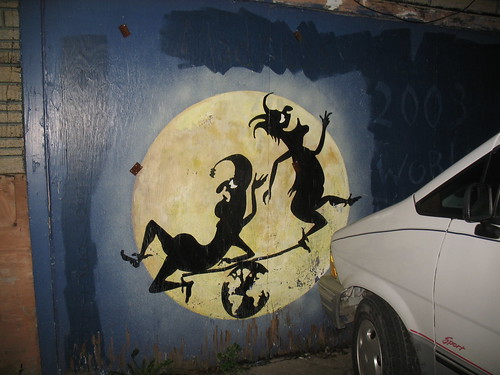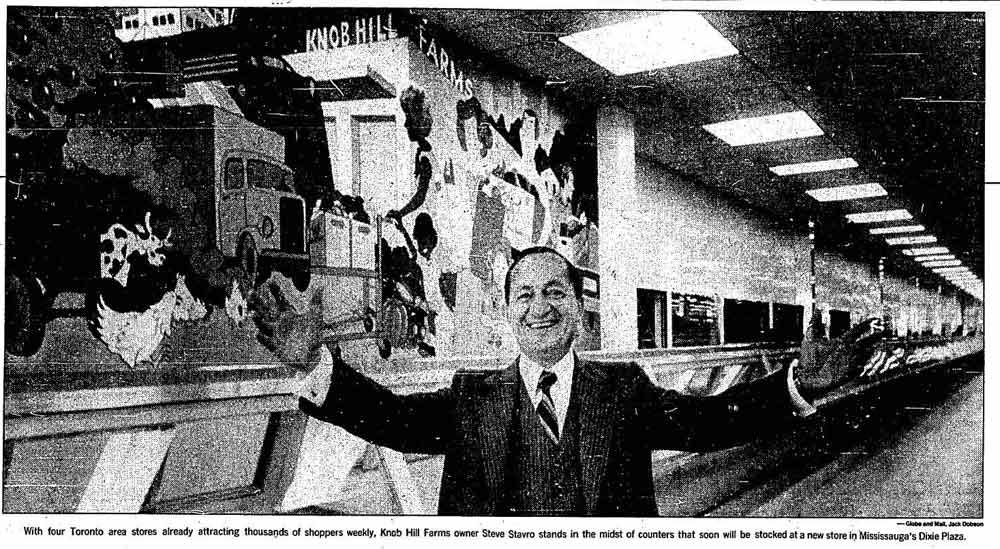past pieces of toronto: cbc don mills broadcast centre
 |
| Photo taken on Gordon Street, Toronto, December 3, 2009. |
From November 2011 through July 2012 I wrote the "Past Pieces of Toronto" column for OpenFile, which explored elements of the city which no longer exist. This is the final installment to be reprinted, one appropriate for today as it was originally posted on April 1, 2012.
That date is key, for the following is an April Fools joke, one I learned several lessons from. Prepare yourself for another lengthy preamble.
I've always liked the concept of April Fools' Day - a little tomfoolery to lighten things up, or a chance to see how much you can trick others. Most of the ideas I've thought tend to require too much execution, such as publishing a website's entire content as if it were, say, April 1, 1964. Nothing coalesced until I thought about how to work a joke into "Past Pieces of Toronto." The idea: take a legitimate development project which was never built and act as if had (briefly) existed.
But which project? The source was obvious: Mark Osbaldeston's two volumes of Unbuilt Toronto. I cannot recommend these books enough for their fascinating glimpses of a Toronto that never was. After flipping through them, I found my subject in volume 2: the CBC's plan to build its broadcast centre in Don Mills.
The research for this piece is legit. Besides the info from Unbuilt Toronto 2, I consulted newspapers just as I would for any other assignment, tracing the rise and fall of the Don Mills proposal. As proof, here is a story from the Star published in 1967 regarding employee concerns about moving.
 |
| Source: the Toronto Star, June 22, 1967. Click on image for larger version. |
But no, I was determined to fool people. A careful reader may have noticed quiet hints something was amiss, like references to editions of the Telegram published after that paper's demise in 1971. The emphasis is on "quiet" - 99.44% of readers would not have picked up on them. The fictional portion of the piece really gets going when I discuss test tapings - everything from there on, with the exception of the actual construction of the current broadcast centre is fake.
Sure enough, it fooled people. Commenters were surprised to learn about this little-known aspect of North York history. But my girlfriend's words really hit me when a historical writer I respected emailed me about the post and was curious about where I had found my information, as they had done research into the project. I sheepishly admitted it was an April Fools joke. It didn't feel good.
LESSON 1: Make 'em laugh. Insert broader, obvious humour, sprinkled with a dash of absurdity.
LESSON 2: Listen to your partner when they preach caution if you ever feel determined to fool others. Otherwise, you fool yourself. Though our relationship fizzled soon after this incident, I continue to value her advice. I didn't appreciate it in this case.
LESSON 3: It's possible to get too carried away with what you perceive is a brilliant idea making brilliant use of your brilliant talent. Don't lose your grounding or your humility.
Enough preamble. Here's the original article.
 |
| Image from cover of a 1968 report on the Don Mills project, taken from Unbuilt Toronto 2. |
Plans for a centralized CBC facility in Toronto existed almost as long as the broadcaster itself. A combination CBC/medical arts building near Yonge Street and St. Clair Avenue proposed in the late 1930s was scuttled by World War II. By 1957, the Royal Commission on Broadcasting counted 16 different CBC facilities in Toronto, a number they expected to grow with the rise of television. Following the commission’s recommendation for the immediate development of new headquarters in both Toronto and Montreal, CBC optioned 33 acres of land north of Eglinton Avenue on the east side of the planned Don Valley Parkway.
When CBC officials announced in 1964 that construction was about to begin, a delegation led by Toronto Mayor Phil Givens met with CBC President J. Alphonse Ouimet to convince him to build downtown instead. Ouimet was open to downtown if the city assembled a parcel similar in size to cost. But, as English CBC head Herbert Walker noted, “As far as we’re concerned, we’re going ahead in Don Mills. There’s no let-up in our presentations.”
Little had developed when Roy Shields devoted his June 22, 1967 Toronto Star television column to employee concerns about moving CBC operations out of downtown. He noted how actors, craftsmen and producers were bitter at how Toronto felt like a backwater compared to the attention and money lavished on Montreal’s new centralized facility. The practice of sending employees and sets back and forth between different locations was increasingly problematic, as was limited booking times to edit popular programs like This Hour Has Seven Days.
The following day, CBC officials hurried to schedule a ground-breaking ceremony on July 1, 1967, hoping to tie the planned facility with the nation’s 100th birthday. While most CBC and political officials were already booked for festive events elsewhere that day, North York Mayor James Service made a brief appearance. He praised the broadcaster for its site choice before dashing off to the borough’s centennial celebrations.
The project was immediately plagued by labour disruptions and numerous incidents where clumsy crane operators knocked down large pieces of the sleek, space-age transmission tower, including one which nearly destroyed a catering truck. By December 1968 CBC officials scrapped the onsite tower and agreed to transmit via a larger tower proposed as part of the City of Toronto’s Metro Centre project. Cables were to be laid to connect the Don Mills broadcast centre to what evolved into the CN Tower.
Work on the rest of the site continued slowly, due to cost overruns in Montreal and reduced federal funding. Despite much of the building still being under construction, test tapings of Front Page Challenge, Mr. Dressup, and The National were made at Don Mills Studio A in January 1972. Producers and performers found the space wanting, especially its horrendous acoustics. The sound was so deadened that Ernie Coombs complained to the Telegram that he couldn’t hear Casey talk while standing beside him on the new Mr. Dressup set. “I wondered if Judith [Lawrence, puppeteer of Casey and Finnegan] was playing a joke on me, but she couldn’t hear me either.”
While the kinks were worked out, plans were underway for the broadcast centre’s grand opening on April 1, 1972. After opening remarks from CBC officials, Prime Minister Pierre Trudeau and Ontario Premier William Davis would cut the ribbon. Behind the ribbon would sit a giant gift box, out of which master of ceremonies William Shatner would emerge to introduce a long line of network personalities. Music would be provided by the Toronto Symphony Orchestra, Maureen Forrester, the Friendly Giant, Stompin’ Tom Connors, and the Guess Who.
These plans were cancelled after a blaze destroyed the facility during the early morning hours of January 29, 1972. No official reason has ever been given for the fire—related documents remain classified. Given the site’s star-crossed history, few were surprised two months later when the federal government announced that instead of rebuilding at Don Mills, the CBC would construct a new broadcast centre downtown (which took a further decade-and-a-half before becoming reality). The property was sold, then levelled to make way for less cursed office buildings.
Additional material from Unbuilt Toronto 2: More of the City That Might Have Been by Mark Osbaldeston (Toronto: Dundurn, 2011), the June 22, 1967 edition of the Toronto Star, and the January 29, 1972 and April 1, 1972 editions of the Telegram.



Comments